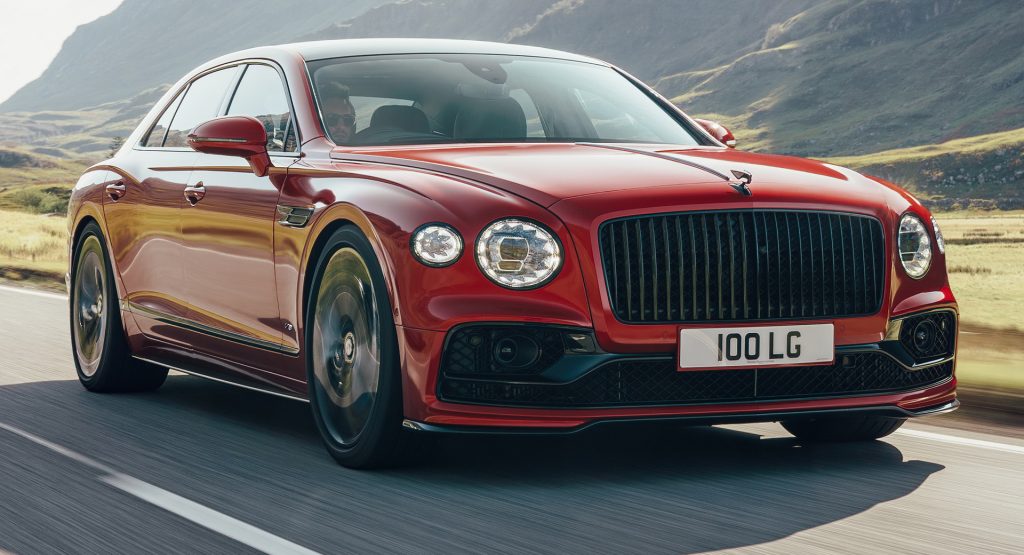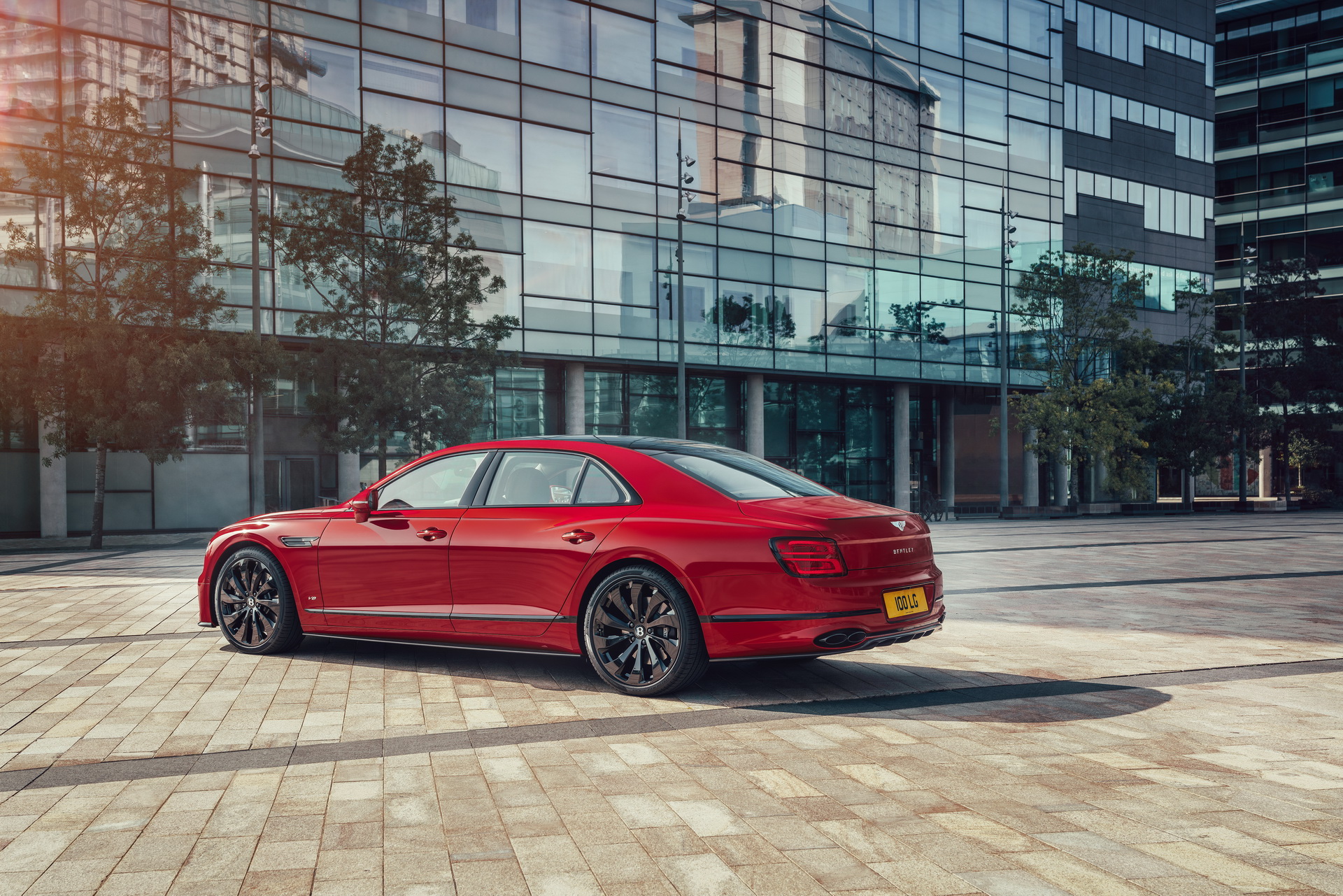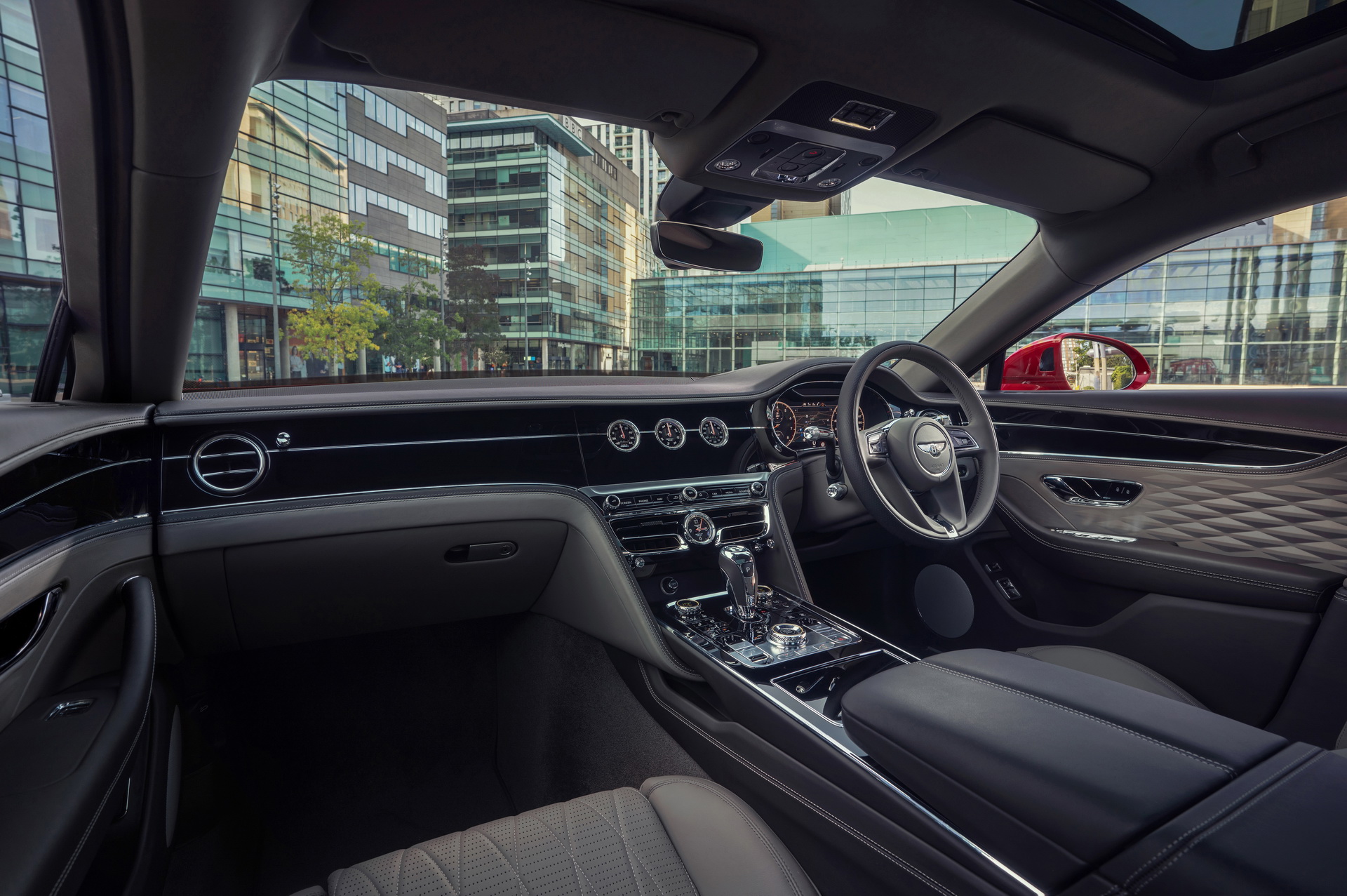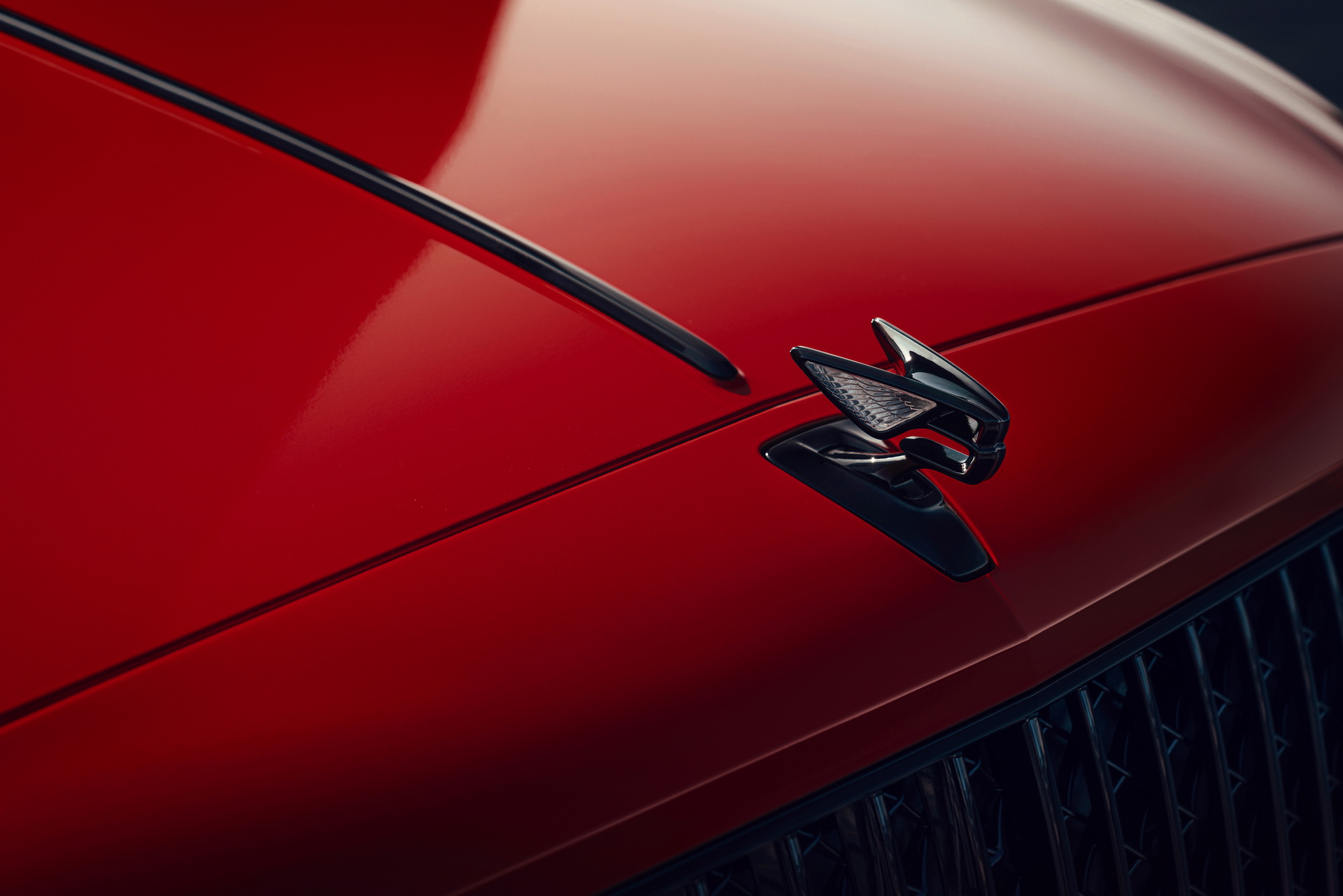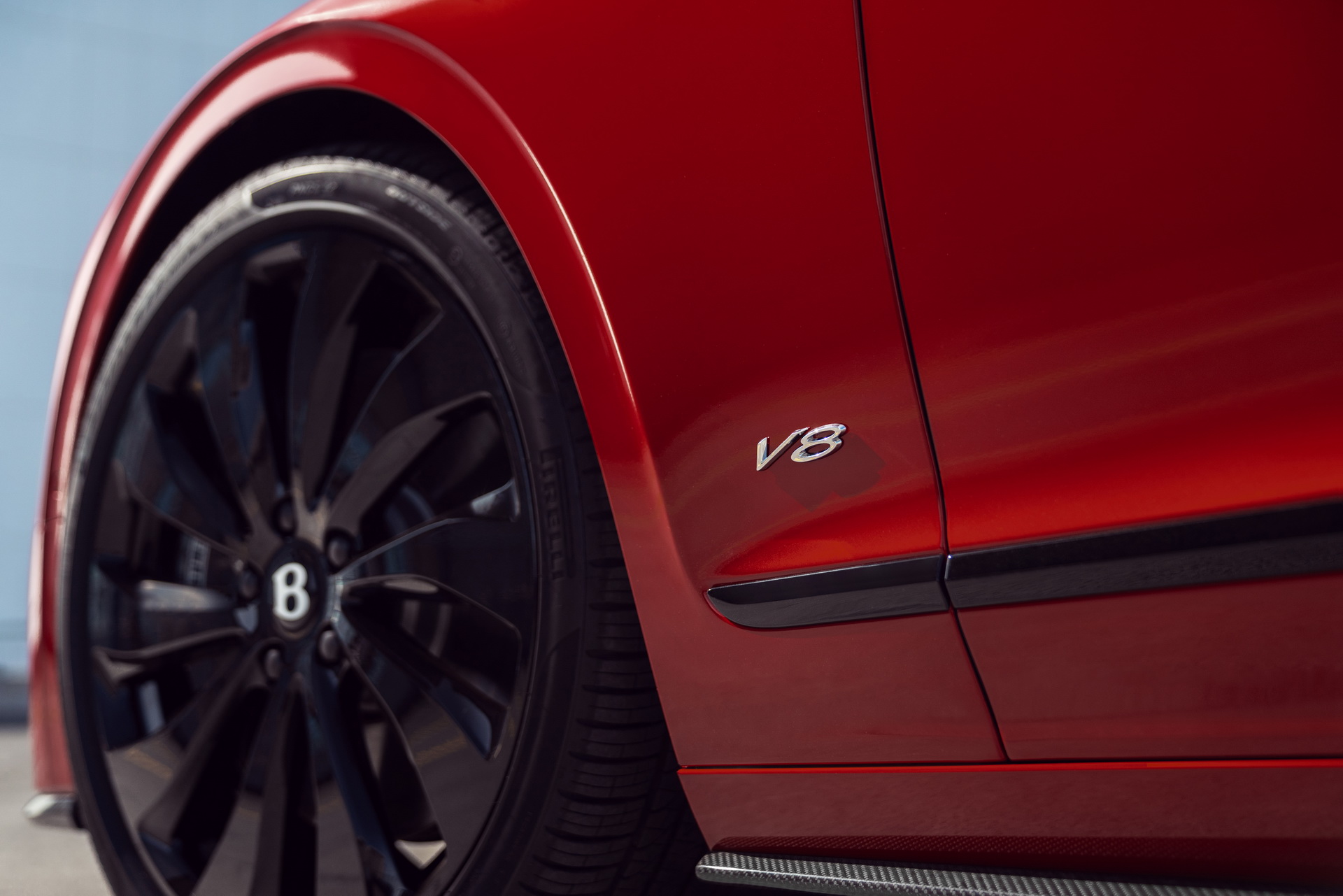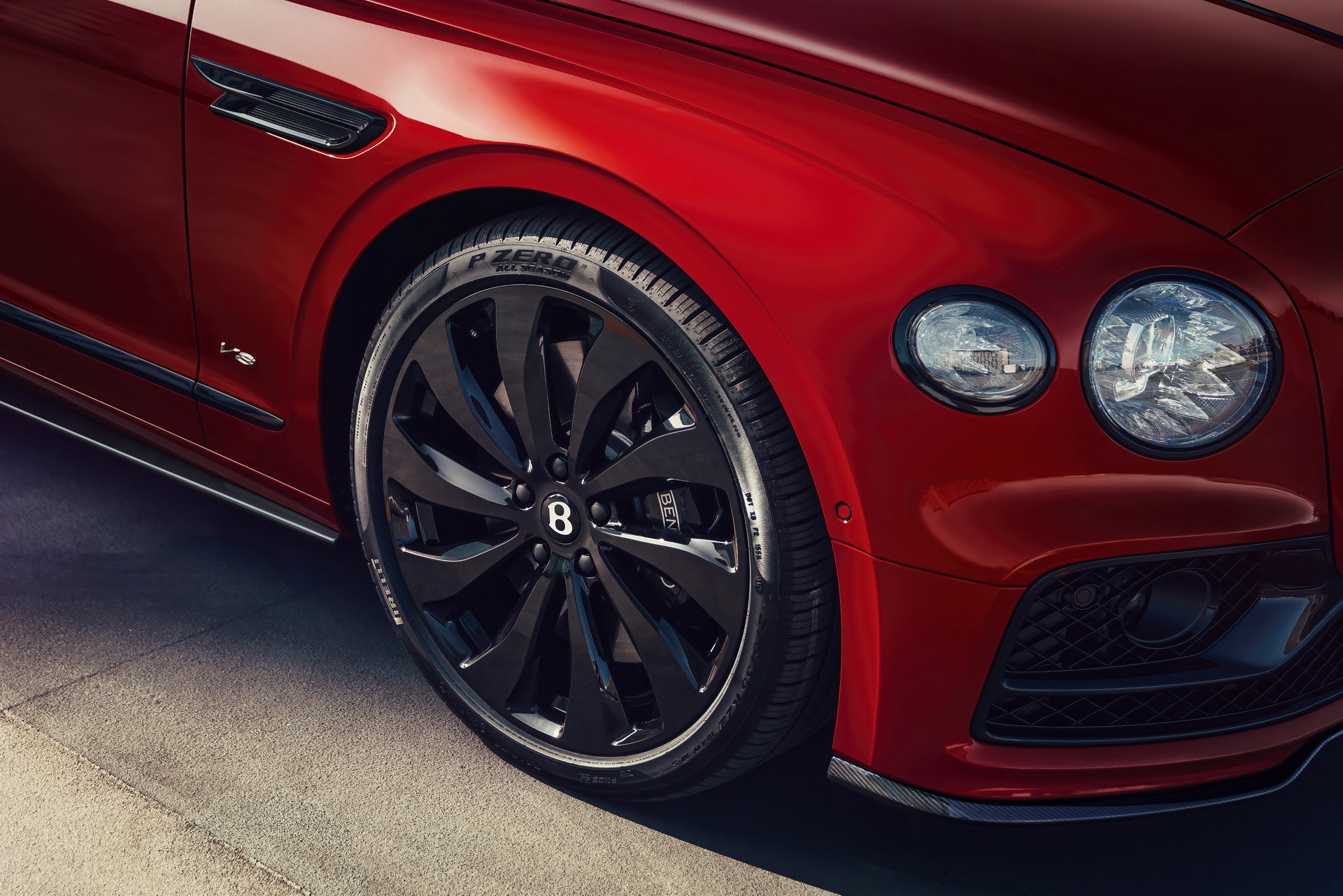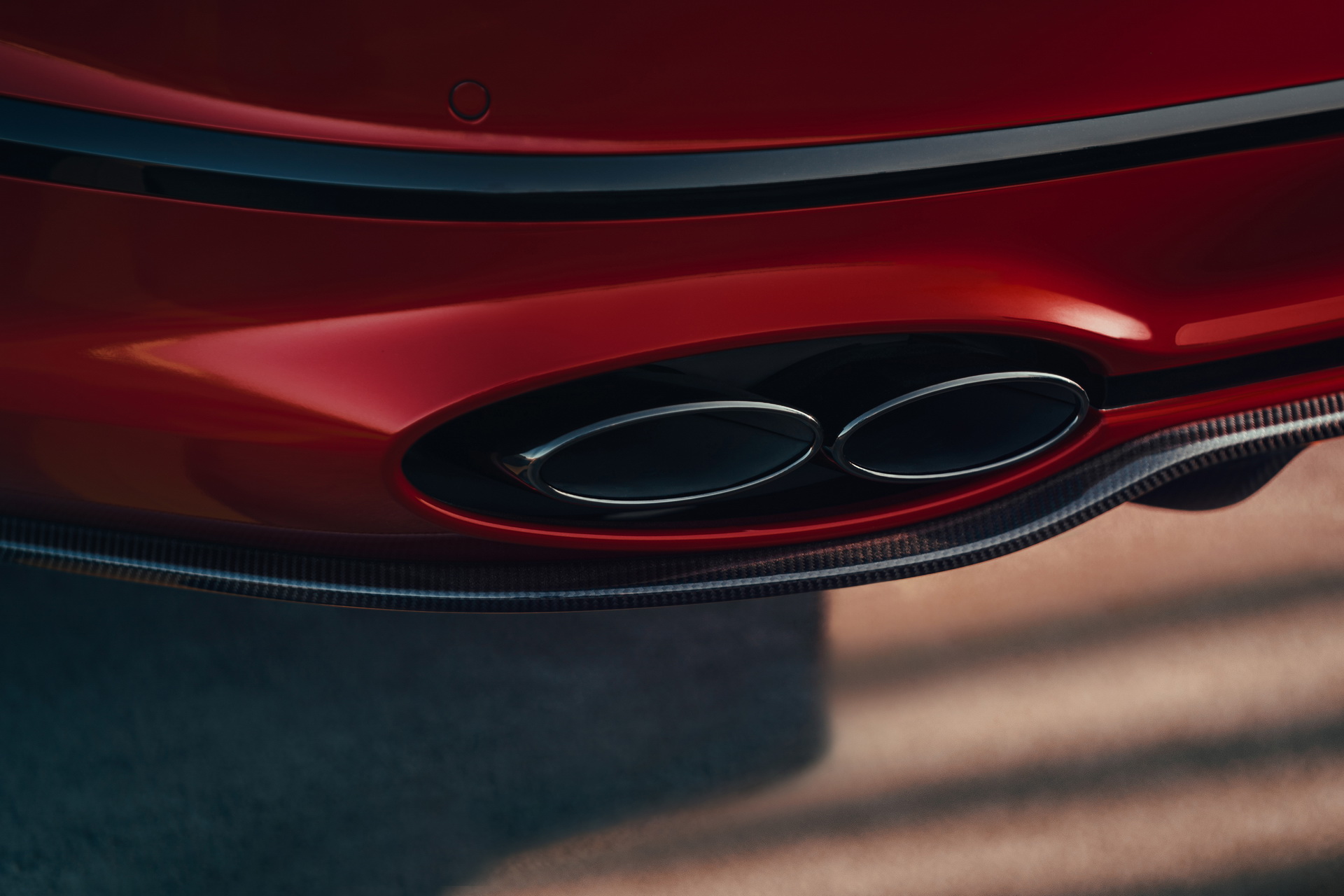Bentley has announced the details of the new Flying Spur V8 model, which offers a more “driver-centric” experience compared to the existing W12 model.
That’s because the new Bentley Flying Spur V8 is 100 kg (220 lbs) lighter than the W12 variant, with the bulk of the weight reduction coming off the nose of the car, making it more agile and responsive to the driver’s inputs.
Read Also: 2021 Bentley Continental GT Mulliner Revealed As Series’ New Luxury Pinnacle
Under the bonnet, you’ll find the same twin-turbocharged 4.0-liter V8 engine that’s featured in the Continental GT, producing 542 HP (550 PS) and 516 lb-ft (700 Nm) of torque. The V8 engine also features a cylinder-deactivation system, which is engaged under light-load conditions improving the fuel economy.
“Based on our research, customer feedback and trends of customer usage, the new Flying Spur V8 has been engineered to deliver driver-focused ability, whilst offering passengers the refinement, comfort, and technology expected from a grand limousine,” said Matthias Rabe, Member of the Board for Engineering at Bentley Motors.
Bentley claims that the new Flying Spur is capable of hitting 60 mph in 4 seconds flat (0-100 km/h in 4.1) and a top speed of 198 mph (318 km/h), which should be enough performance for customers looking to buy a luxury sedan of this caliber.
The new Flying Spur V8 also features front and rear hollow anti-roll bars as standard, with Bentley’s 48-volt active anti-roll control system offered as an option. Other standard features include an adaptive three-chamber air suspension, torque vectoring by brake, and Drive Dynamics Control. Customers can also opt for an all-wheel steering system that improves both stability at highway speeds and maneuverability around town.
Bentley will offer the new Flying Spur V8 in four- and five-seat configurations and with a virtually endless list of customization options for those who want a bespoke specification.
The first customer orders for the new Bentley Flying Spur V8 are already underway, with deliveries expected to begin in late 2020 for the UK and Europe. Other global markets will follow shortly after in 2021.








